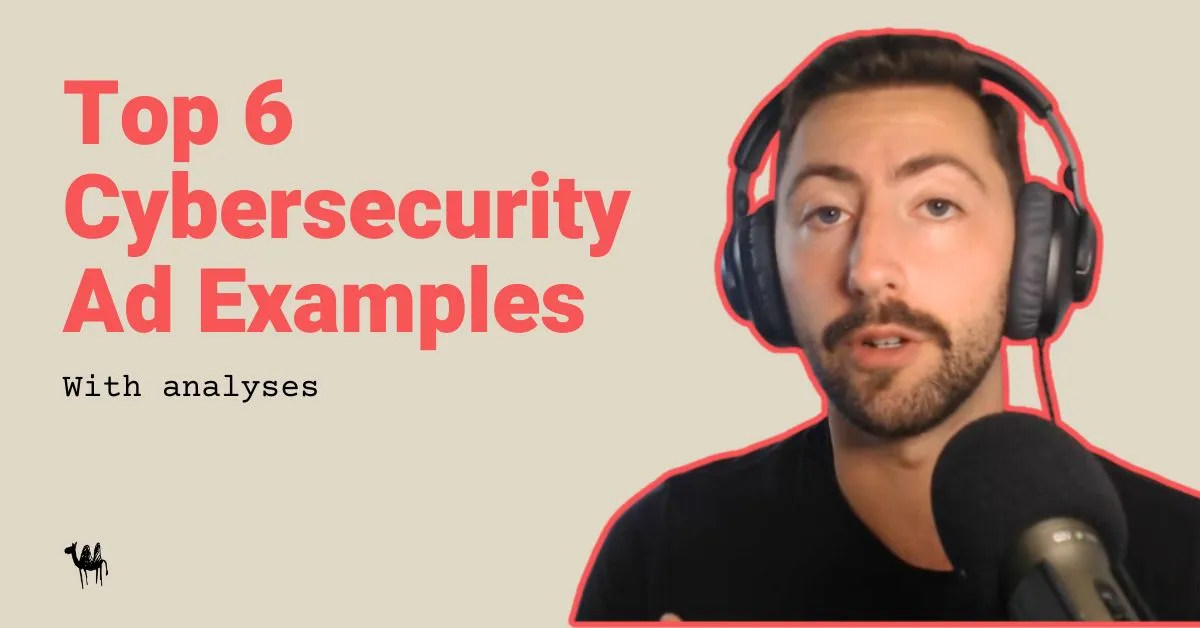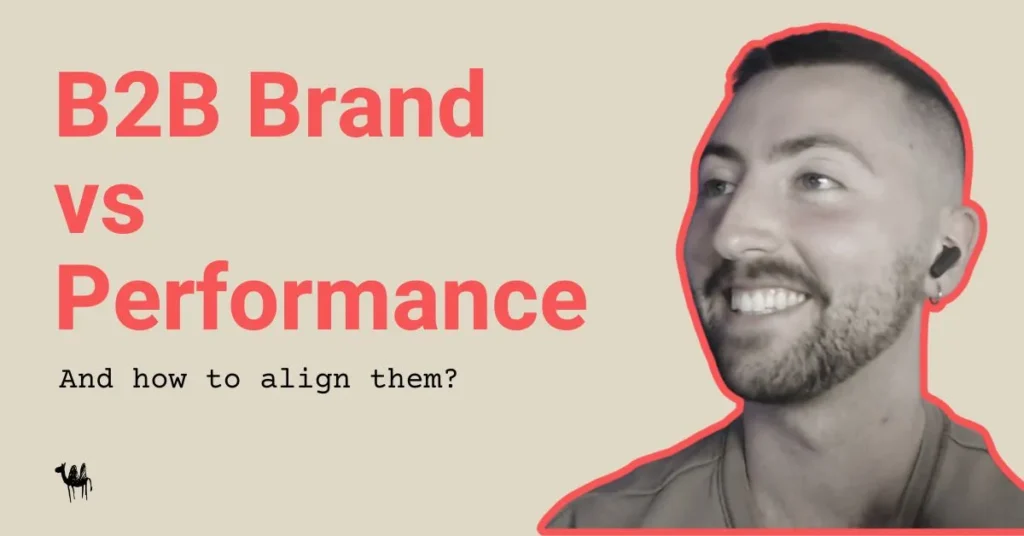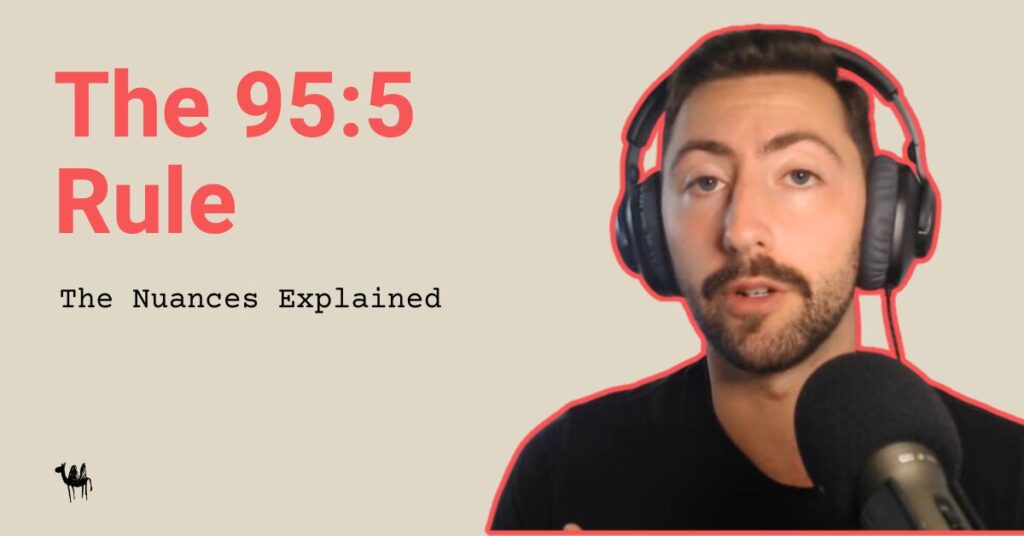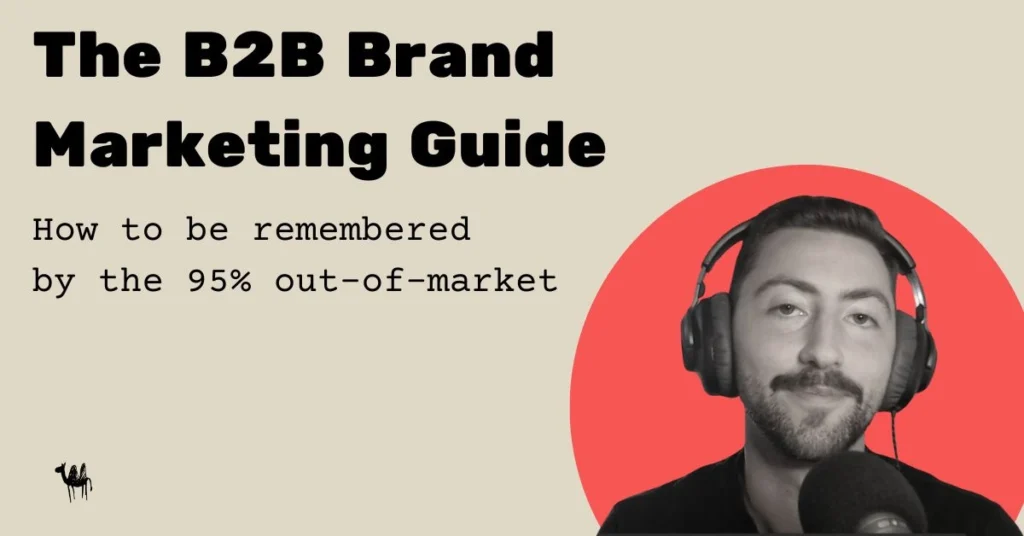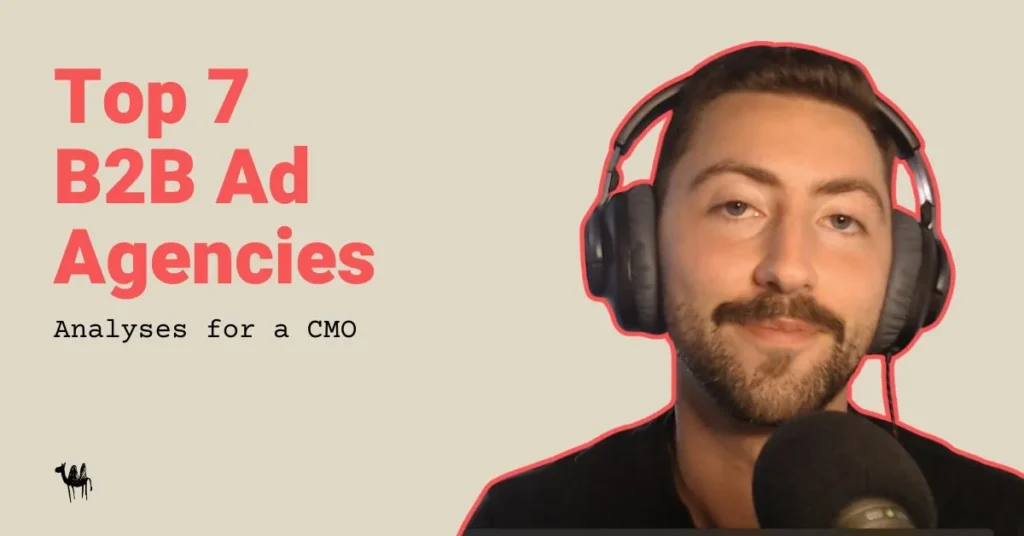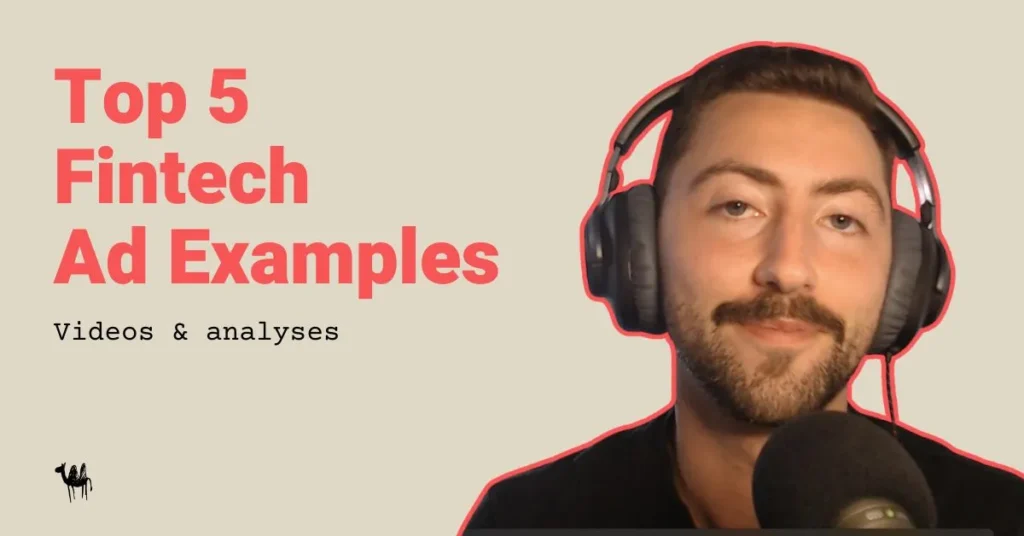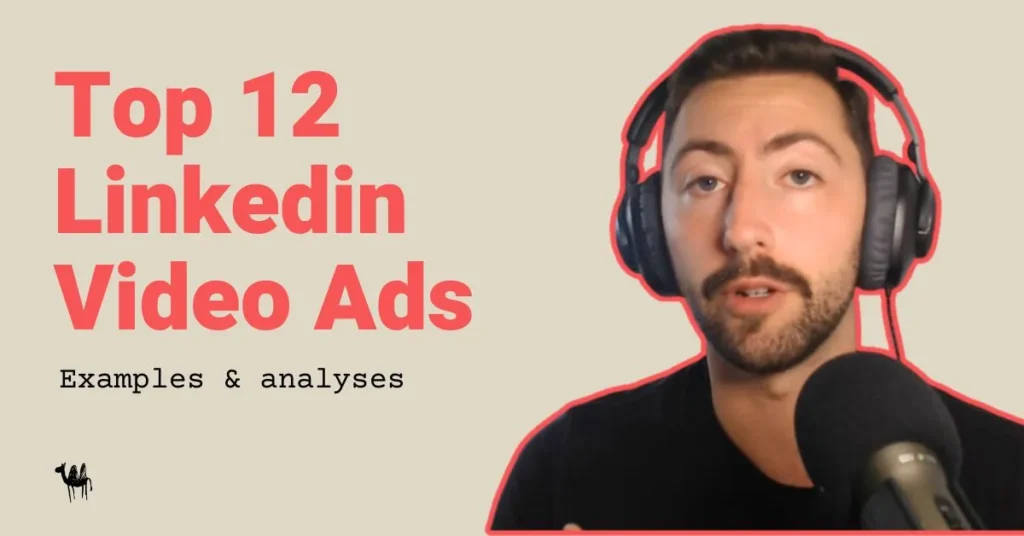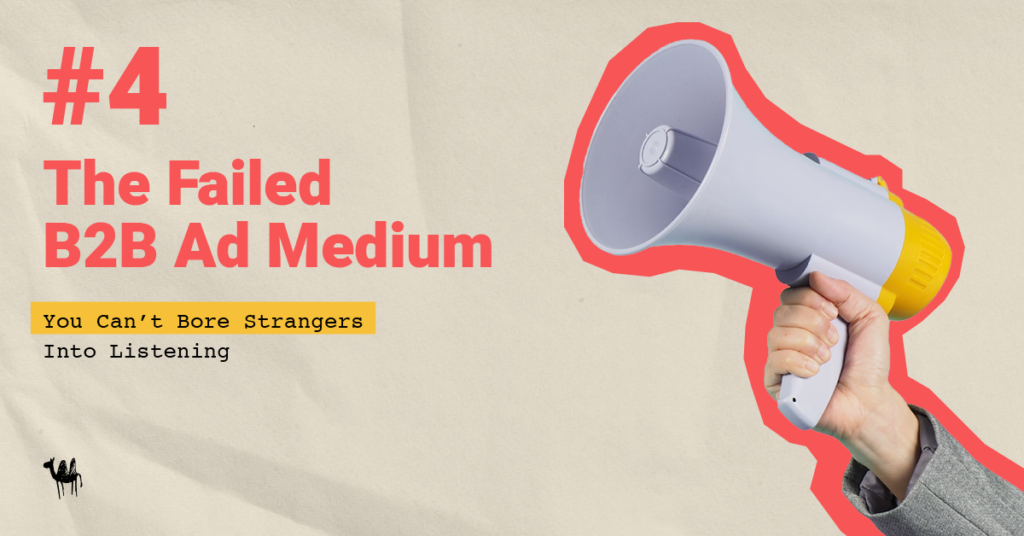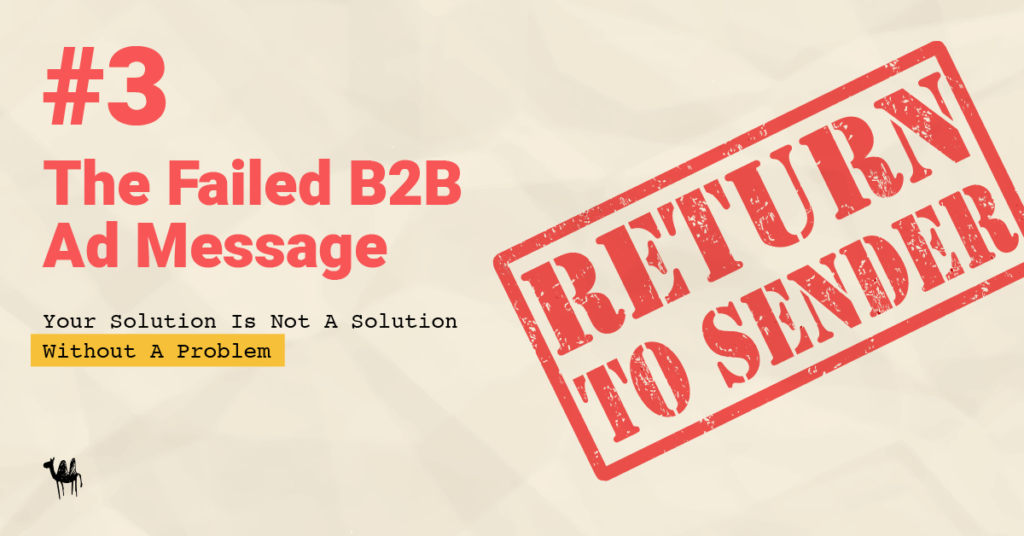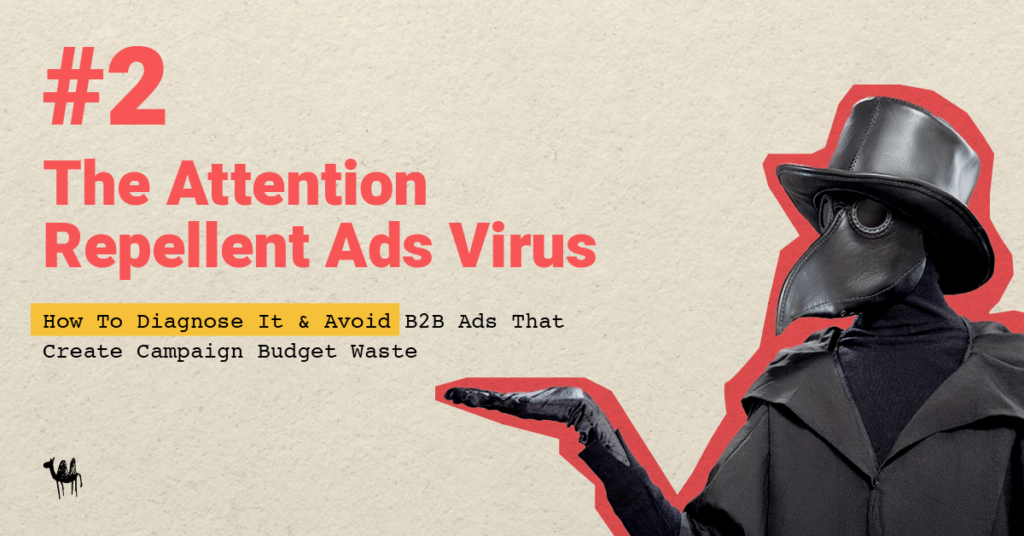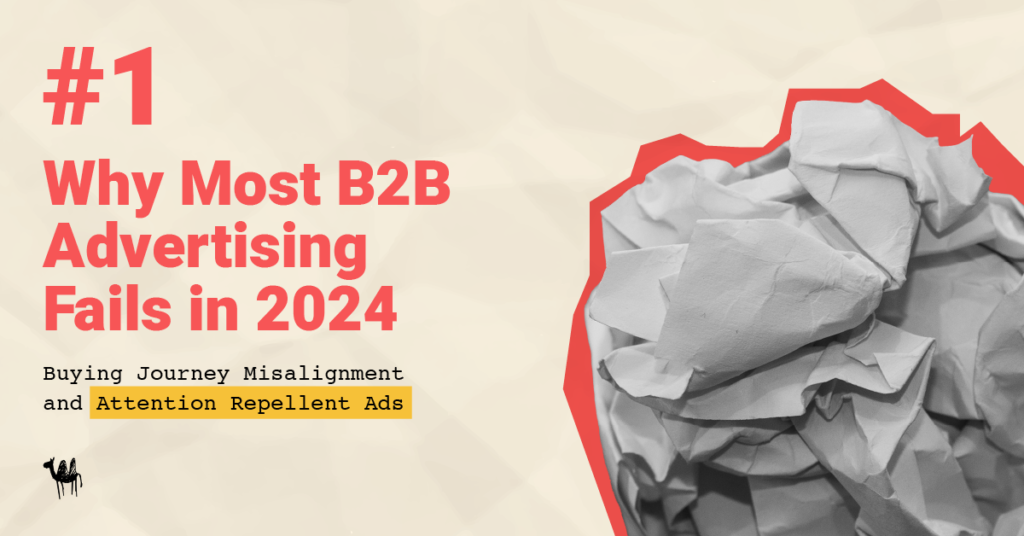If you’re in one of the following situations, this article is for you:
- you’re planning an advertising campaign for your cybersecurity or security company
- you’re deciding which kind of cybersecurity creative to use
- you’re researching the most effective messaging for your cybersecurity or security ads
- you’re a marketing strategist (i.e. CMO or serving right below one)
The Problem with Most Cybersecurity Advertisements
Most cybersecurity ads are stuck in the Stone Age of marketing, which is very ironic considering that the products being sold are so complex and advanced. Yet, many of these ads fail to connect because of a few recurring issues.
Most Ads Have The Wrong Message:
Many cybersecurity ads focus on one or more of the following:
- Features
- Brand name and logo
- Their “solution” without really articulating the problem
Hell, I’ve seen ads that don’t even have a message! It’s just a shield or a lock with their brand name next to it. They use too much jargon and fail to convey the human pain behind the problem. Features like acronyms and tech specs are things few outside IT care about.
Instead, cybersecurity ads should address the real stakes: data loss, downtime, and the anxiety that keeps CISOs (or other target audience) awake at night. Your message isn’t about what your product does, but why your audience should care.
To put it simply: Your ad message should focus on the specific problem buyers have and that your brand solves.
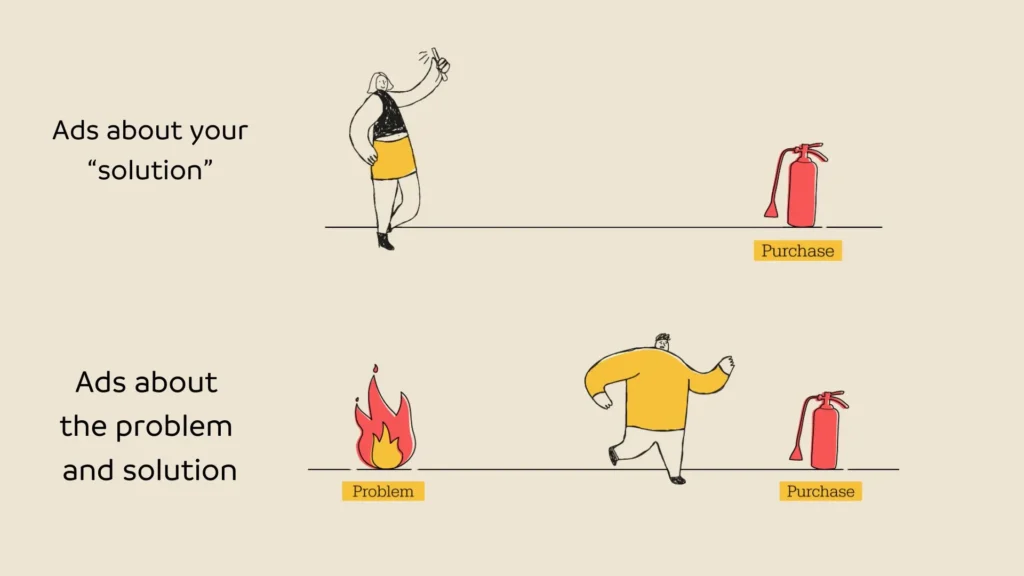
Most Ads Have The Wrong Communication Style
Most cybersecurity ads feel like they’re competing for the title of “Most Cliché Cybersecurity Ad.”
The result? People scroll past them, ignoring the content.
Remember, emotions are needed to get attention and be remembered. Logic comes into play later when making a buying decision. But in advertising, you need to lead with emotion and leave the logic for the sales conversation.
To put it simply: You can’t bore strangers (out-of-market buyers) into listening, remembering, and sharing your ad.
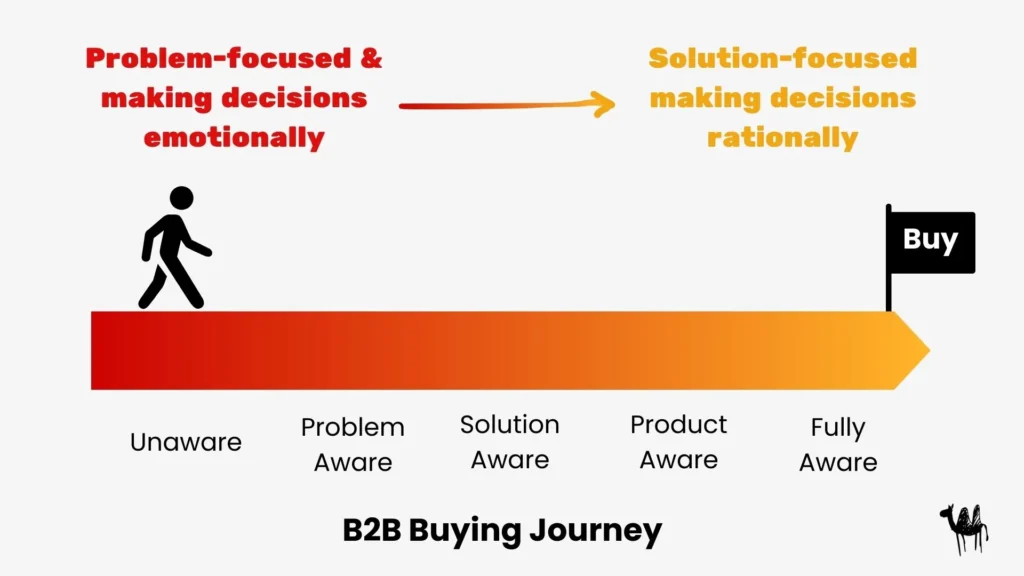
Most Ads Have The Wrong Medium
Text-heavy white papers or static banner ads? Come on.
In an age where everyone is glued to TV, Netflix, YouTube, and social media… you decide to release yet another white paper? Your buyers are humans! Video can show the urgency, the emotion, and the real impact of security issues in a way that written words just can’t.
White papers, ebooks, and reports are great for lower funnel content and sales conversations. But no one wants to risk an eye doctor appointment for a brand they don’t know yet.
Video may seem more expensive upfront, but wasting your ad budget on static content no one engages with is far more costly.
Better creative = lower CACs.
My Criteria for These Cybersecurity Video Ad Examples
Instead of making my criteria based on “Ads That Tell You It’s A Cybersecurity Ad In 1 Second”, I’ve focused on the following:
- Does it address a real problem the ideal audience has?
- Is it communicated in a way that the audience actually enjoys? Is it emotional enough to create a memory of the brand by the 95% of out-of-market buyers?
- Do viewers explicitly express that they enjoyed watching it?
Perfect cybersecurity ads are rare, but these examples stand out as some of the best.
Top 6 Best Cybersecurity Video Ads
Shut the door. Get ready to laugh. Loudly.
Cybersecurity Ad Example 1: Cybersecurity and Skincare by 1Password
Why this cybersecurity ad works:
Not everyone has the budget to hire Ryan Reynolds to be the star of their ads. But the actor is only a small factor in the execution of this ad.
The human brain ignores the majority of stimuli in their environment. It gives attention selectively to stimuli that stands out. In our article on emotional advertising, we used Bobathor The Caveman, our common ancestor, to explain it.
‘Bobathor takes a leisure walk in the woods, hearing the sounds of birds chirping, river flowing, wind in the leaves. These are stimuli that the brain is used to, and as a result ignores. But then all of a sudden, he hears crumpling leaves behind him. He feels the adrenaline and fear, pushing him to turn immediately. Bob sees a big bad wolf ready to attack.’
When you break the pattern and target the emotion of surprise, the human brain pays attention and remembers. This ad breaks the pattern in SO many ways.
Always think of Bobathor when creating ads: you can’t bore strangers into looking at your ads. Only make them feel.
Don’t take my word for it – take a look at what the viewers say…

Cybersecurity Ad Example 2: Perfect Match by EXN & Thales
Why this cybersecurity ad works:
I might be a bit biased since we produced this ad (one of three in the ‘Knight Series’).
It is a great combination of targeting the high-arousal emotions of awe, surprise, and amusement while putting together a relevant story about personal data. And high-arousal emotions are what motivate us to pay attention, take action, remember, and share word of mouth – what all good advertising achieves.
Surprise: A knight at a bar? You don’t see that every day.
Amusement: A knight attempting to give his number to a girl at a bar is pretty dang funny. The rejection is a little sad but don’t lie…you laughed a little.
Awe: The overcoming of rejection to find his true and perfect match…another knight!
And with simple video production like this, it’s much more budget friendly than Ryan Reynolds.
Cybersecurity Ad Example 3: Wizer Cybersecurity Awareness Training
Why this cybersecurity ad works: This ad follows the PESO Formula:
- Problem: It focuses primarily on a root Problem that buyers face.
- Emotion: It uses Emotion (humor) to highlight the pains of the problem.
- Solution: It clearly presents the brand’s Solution to that problem.
- Outcome: It shows the positive Outcome of solving the issue.
When you use the PESO Formula in a brand video ad like this…
- the 95% out of market buyers remember your brand as the go-to solution to this specific problem when they become ready to buy it.
- the 5% in-market buyers will see that you understand the problem so well, from their perspective, you obviously understand the solution the best. The result? Buying!
A principle used in this video ad: the brand that understands the problem the best, from the buyer’s perspective, understands the solution the best.
It’s important to note that we’ve seen some cybersecurity ads that get the message right, but not the communication style (emotional). The 95% won’t remember your message. And as a result, it’s all a waste.
Cybersecurity Ad Example 4: Troy by CrowdStrike
Why this cybersecurity ad works:
When using the PESO Formula for an ad, a key component is to use metaphor to break down the message about the problem to its simplest nature while making it emotional and funny. The trojan horse is a story we all know. And because it’s something we all know, the problem is immediately clear in our mind.
The more clear, simple, and visible the problem is in the mind of the buyer, the more they will see you as the go-to solution.
Cybersecurity Ad Example 5: Checkpoint
Why this cybersecurity ad works:
The messaging about the problem could be a bit more specific here. But one thing is for sure: this ad gets heard and remembered.
Clicking on links and videos of cute cats or dogs is something that is VERY relatable and funny.
Cybersecurity Ad Example 6: Ransomware by Thales
Why this cybersecurity ad works:
Humor is usually the best way to advertising more emotional and memorable. But sometimes it can be hard to get buy-in from the exec team. This is a great cybersecurity video example of how to target the emotion of surprise, without using humor.
Instead of just talking about the problem, it demonstrates the problem in non-obvious way, making it more memorable in the mind of buyers.
We made this one, too 🙂
Why Cybersecurity Marketing Needs to Be Done Differently
Cybersecurity marketing can’t just follow the generic B2B or B2C marketing playbook. They need to address two unique components of cybersecurity marketing:
1. Most Potential Security Buyers Are Problem Unaware or Symptom Unaware
All buyers buy because of problems. But not all problems are the same. There are 2 types of problems that businesses solve:
- Obvious Problems are easy to identify and articulate. Because of the problem’s nature, the target audience is likely already mostly aware of it and acknowledges it as an issue.
Example: Slow and fragmented communication. Most users are aware of this issue and recognize it as a problem they need to address. (Slack solves this obvious problem)
- Non-Obvious Problem is difficult to identify and articulate. The target audience is not likely to become aware of it on their own. Someone needs to connect the multiple data points and educate about the problem and how it impacts them.
Example: The risk of dormant malware. The pains caused by this have not been felt yet and it is not something one simply becomes aware of on their own.
Most security services solve non-obvious problems. Therefore, their marketing and advertising needs to focus on not just empathizing with the pains that buyers have currently (like most B2B services), but rather making them aware of the root cause and future pains that will occur.
In some cases, they may be aware of the root cause but not aware of the non-obvious consequences.
Some other common Non-Obvious Problems that are solved by B2B services:
- outdated strategy
- misalignment
- changes in behavior
- risks
- leaks
If they don’t see the problem, they won’t see the need for your solution.
The opportunity here?
When you’re the brand that makes them aware of the problem, show you understand the problem the best, they perceive you to be the brand that best understands the solution.
An easy way to achieve that? Use metaphors that simplify the root problem and pain to something the viewers already understand so well.
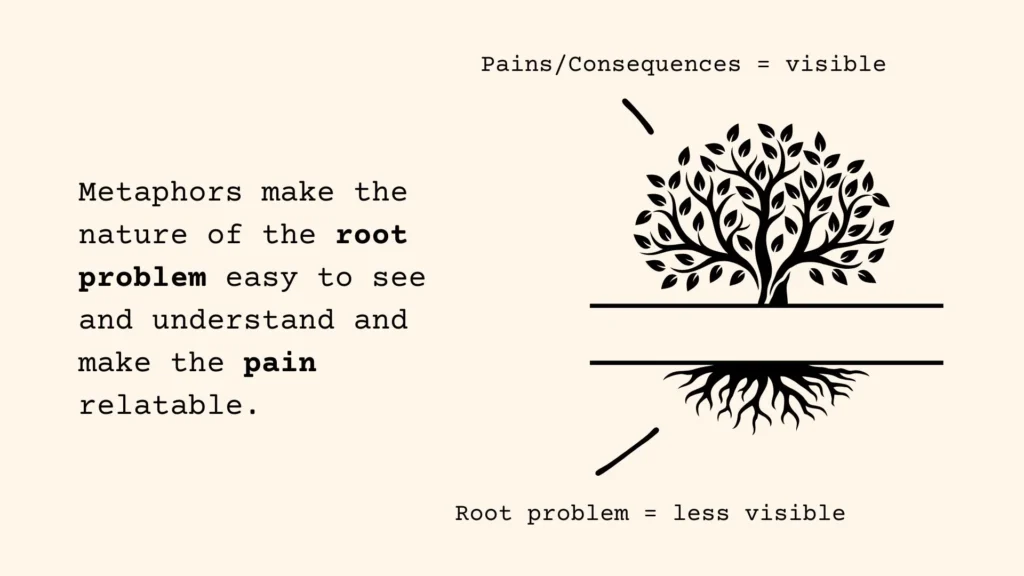
2. Huge Opportunity for Differentiation in Cybersecurity Ads
In no other category do advertisements and commercials look so similar.
The opportunity? Stand out.
When every ad is telling the same story in the same way, there’s a massive chance to differentiate with emotional ads that actually connect. Humor works because it’s unexpected in this space. It grabs attention and makes you memorable in a field where most brands are playing it way too safe.
If you can make buyers laugh—and then make them think—you’ve won half the battle. Inject some personality into your brand, and you’ll leave a lasting impression in a category that’s been starved for creativity.
You might say, “But we’re not a funny brand. We’re serious!”
To which my response would be, when you talk to clients, do you never make them smile? Do you never share a laugh?
The message is what’s serious: the problem and the risk. But how you communicate that message can be funny.
Unless you prefer strangers to never consume the message in the first place…
